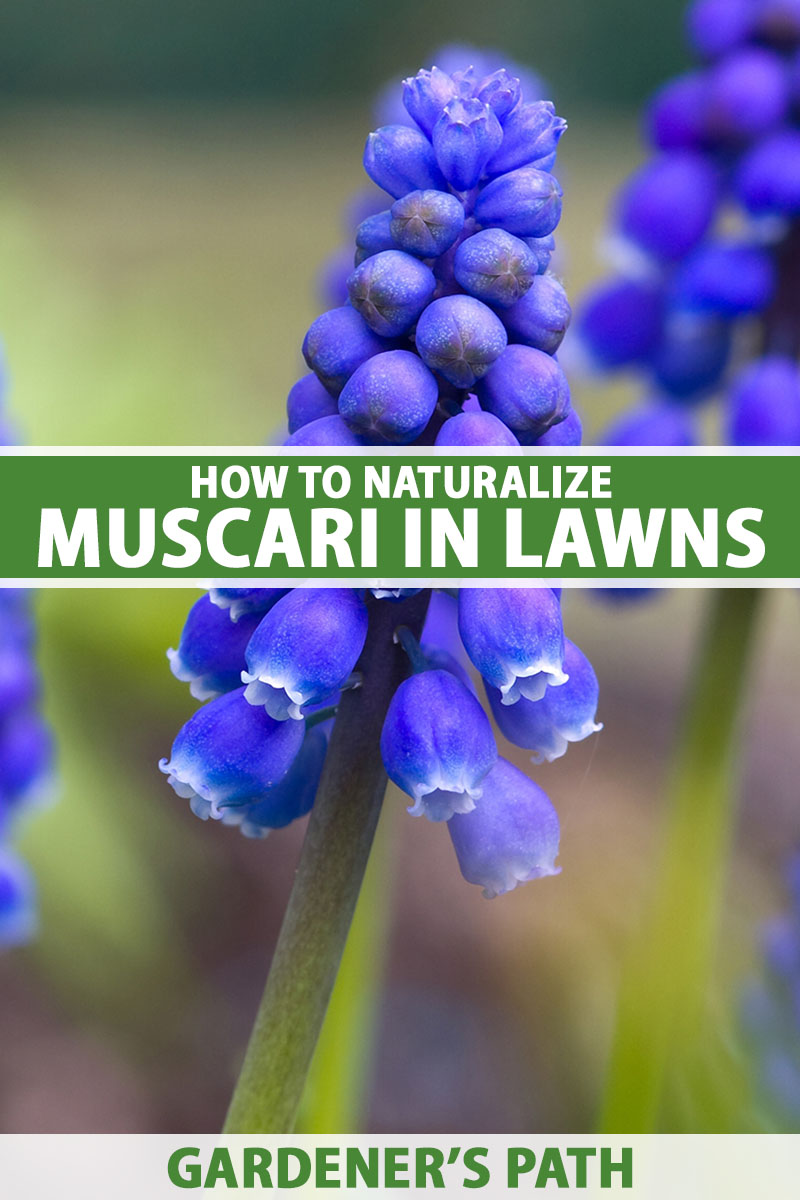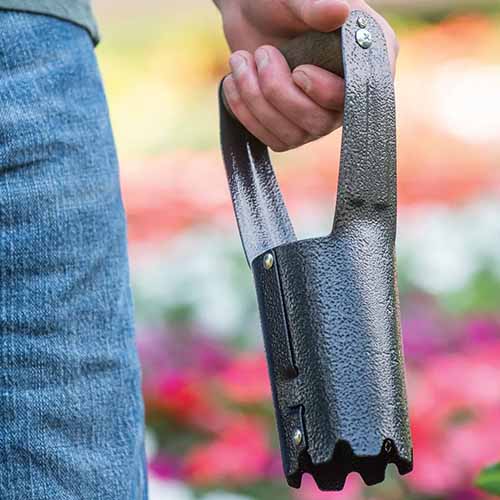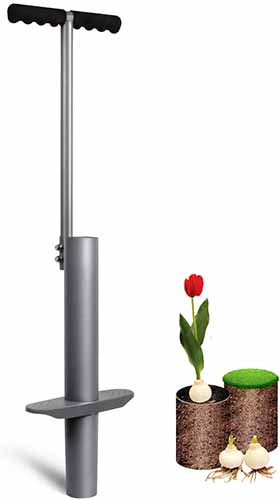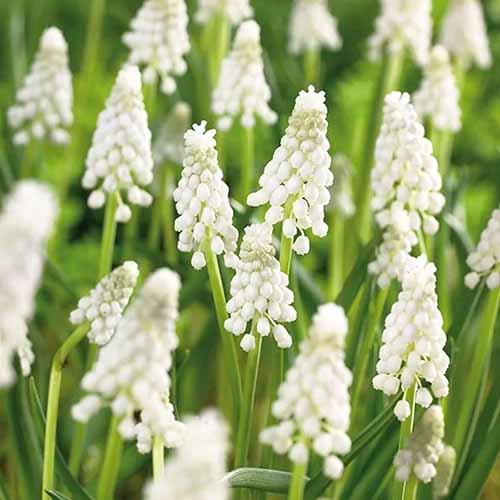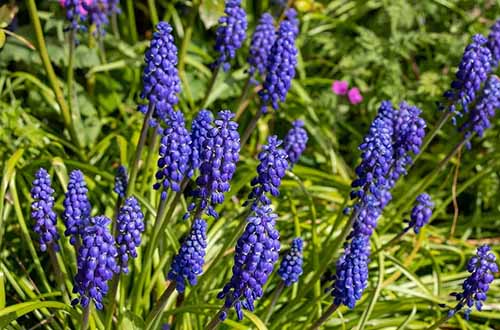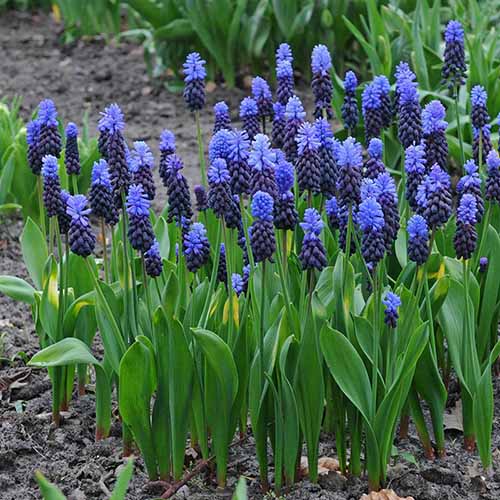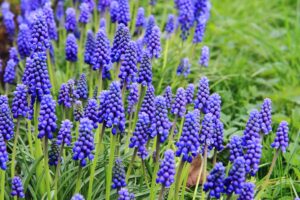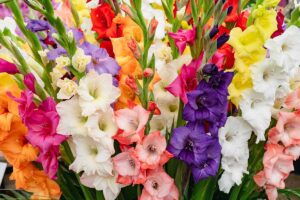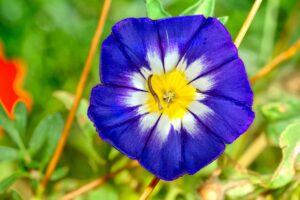Do you love the idea of carefree grape hyacinths naturalizing in your lawn for pretty waves of colorful spring flowers?
Many perennial spring-flowering bulbs, like Muscari, thrive when planted in grass and easily become well-established, multiplying readily and returning every spring to brighten yards with early color.
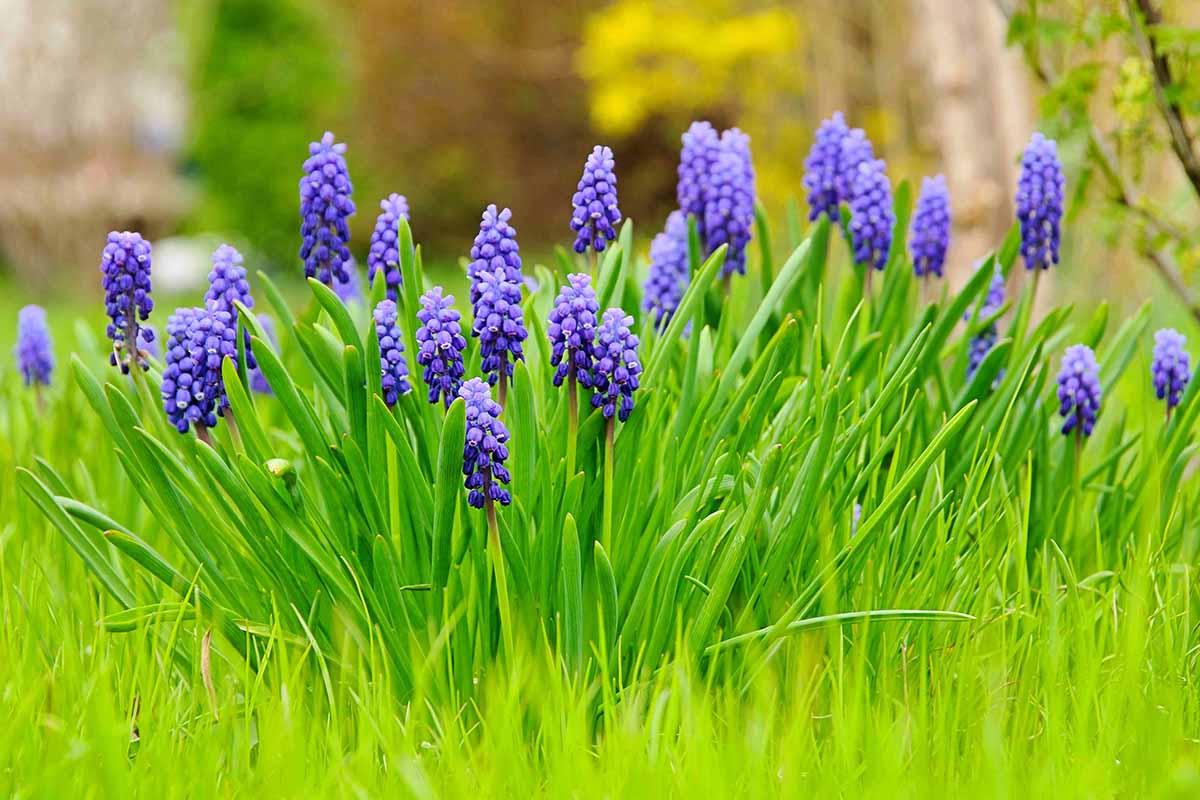
We link to vendors to help you find relevant products. If you buy from one of our links, we may earn a commission.
But they still need to receive the right conditions to flourish, like well-draining soil and full sun.
And it’s important to choose early-flowering varieties so they finish flowering before the lawn mower comes out – trimming the tips is usually okay, but the foliage needs to remain intact to reenergize the bulbs through photosynthesis.
So if you’re ready for a sea of pretty blue, purple, and/or white flowers in your yard, let’s have a look at the steps involved to naturalize grape hyacinths in your lawn.
Here’s what you’ll find ahead:
What You’ll Learn
When to Plant
Grape hyacinths, Muscari spp., are spring flowering perennials that need to be planted in fall for blooms the following spring.
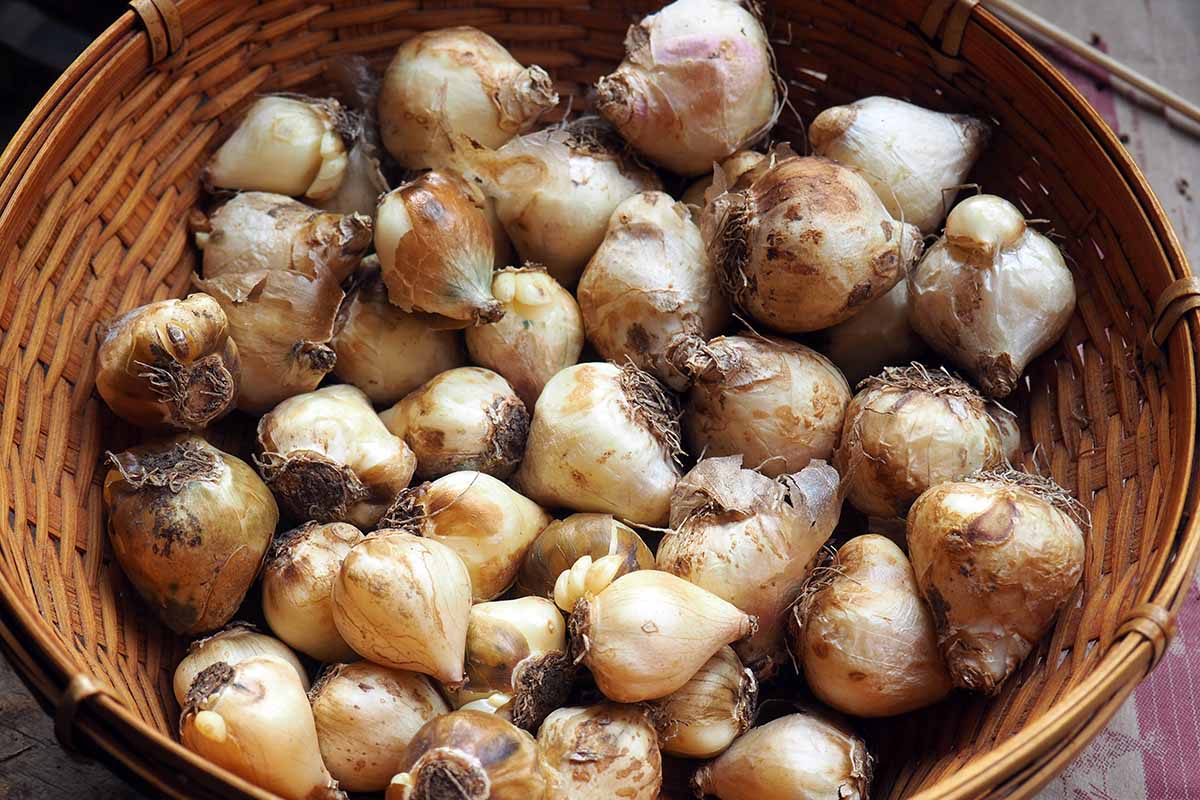
It’s helpful to wait until autumn rains arrive to provide regular water as the small bulbs can dry out quickly. They need to go into the ground before freezing temperatures render your sod unworkable.
This makes October and November the best time to plant in the Northern Hemisphere, but the exact timing varies depending on your region.
How to Plant
Generally, planting bulbs in lawns for naturalizing is pretty much the same as planting them in garden beds – the difference being you have to work with established turf.
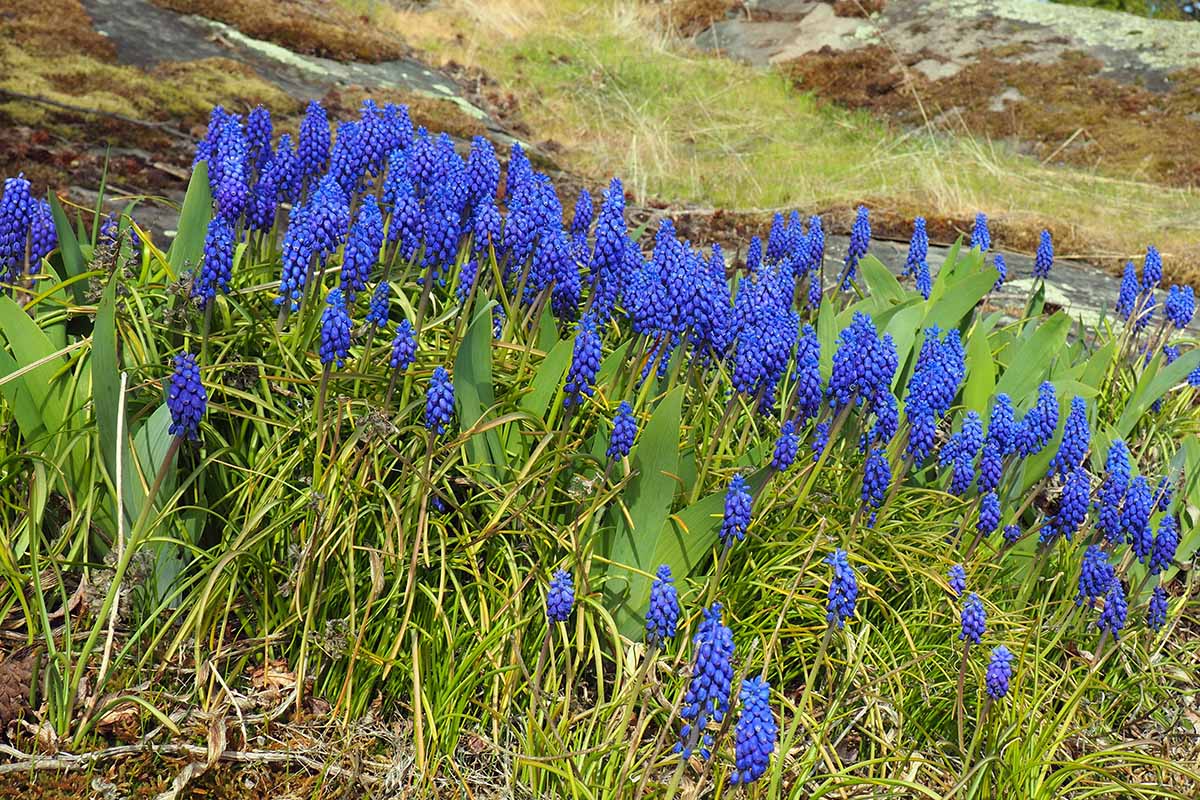
The simplest method is to choose a full sun location and peel back selected areas of sod in rectangles or squares.
To do this, use a sharp spade or sod lifter to cut through the grass on three sides, cutting to a depth of three inches to clear the roots.
This creates a planting site that’s the ideal depth for these small-sized bulbs.
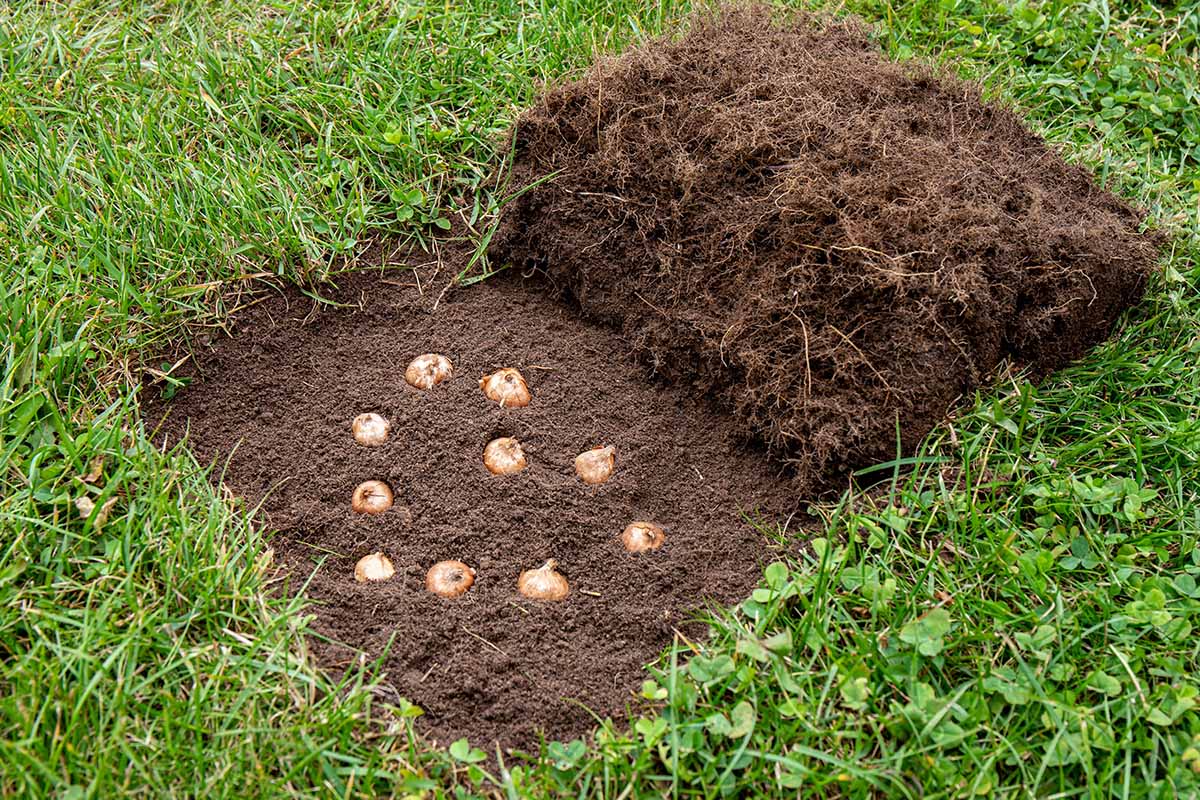
Once the three sides are cut, lift the sod in one piece and flip it backwards over the fourth side.
If needed, loosen the soil underneath lightly with a cultivator, spade, or trowel.
Scratch in a couple of tablespoons of bone meal for strong, healthy roots then place your bulbs onto the soil. Use one tablespoon of bone meal for each group of five to 10.
For the best visual impact when they are in bloom, plant them in groups of 10, 20, or 30, using all one color or a combination of your favorite shades.
Ensure they’re spaced a couple of inches apart with the root side down – the root side is the flattish bottom part.
Once the bulbs are set, flip the turf back into place and tamp down gently. Water gently to settle in place.
As an alternative to peeling back rectangles of sod, you can create individual pockets in the lawn using a bulb planter, hand trowel, or narrow spade, which is effective for smaller plantings.
Use your selected tool to dig down to a depth of three inches and pull back a small flap of sod and some soil.
A trowel or narrow spade creates a small burrow while a bulb planter pulls out a plug of grass, roots, and soil much like a cookie cutter.

Mix one tablespoon of bone meal into the soil and set the bulbs in place with the flat, root-end down, and spaced a couple of inches apart.
Replace the flap or plug and tamp down gently then water to settle in place.
Muscari often sends up shoots of foliage in autumn and if this occurs, is nothing to be concerned about – they’ll survive winter just fine for spring flowers!
If you need tools for the job, this Burpee Classic Bulb planter, available at Burpee, is made of bend-free stainless steel and features an oak handle. It has a five-year guarantee.
Walensee Stainless Steel Planter
Or you can stand up on the job with a stainless steel model that features a sturdy step and T-handle. It’s available from Walensee via Walmart.
Early Flowering Varieties
As a general rule of thumb for bulbs planted in lawns, you want them to finish flowering about six weeks before your lawn needs to be mowed for the first time.
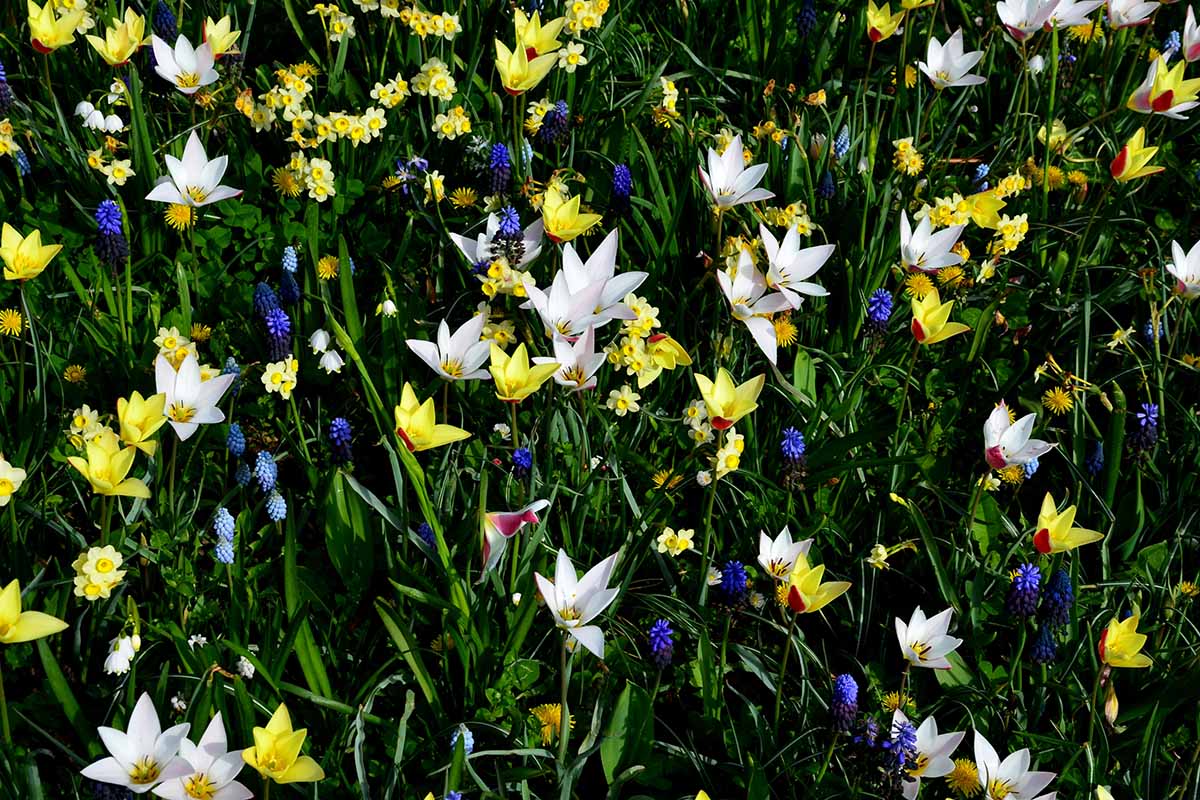
This is because the foliage needs to capture enough of the sun’s energy through photosynthesis to produce big, healthy bulbs for next year.
Cutting the leaves back too soon typically results in a poor performance in their second year.
The most popular Muscari varieties come from the species M. armeniacum, but these are mid-season bloomers that usually flower when the grass needs cutting.
To keep the foliage intact for a floriferous second season and beyond, make your selection from the early-flowering varieties.
Beautiful early flowering species include M. azureum, M. botryoides, and M. latifolium, all of which make a good choice for spreading and naturalizing in lawns.
‘Album’ is a gorgeous, pure white M. azureum cultivar that blooms early with a light, fruity fragrance.
You can find bulbs available at Nature Hills Nursery.
M. azureum species plants feature gorgeous sky blue florets that flower early spring and produce a delicate, sweet perfume.
You can find blue M. azureum in packets of 20 from Daylily Nursery at Walmart.
M. latifolium species are characterized by two-toned florets, sky blue at the top with deep indigo bottoms that flower in early spring with a light, sweet fragrance.
Bulbs in a variety of packet sizes can be found at Eden Brothers.
‘Grape Ice’ is a cultivar of M. latifolium that features fantastic two-tone flowers, white on top with grape purple bottoms that appear in early spring with an airy, sweet scent.
You can find ‘Grape Ice’ available at Nature Hills Nursery.
Care After Flowering
Once your grape hyacinths are planted, they’ll multiply freely and continue naturalizing with no further assistance from you.
As mentioned, the bulbs need to recharge and store energy by absorbing sunlight.
Ideally, the foliage should be left undisturbed until it turns yellow, withers, and dies back on its own – which means no mowing until about six weeks after the plants finish flowering.
You can always mow around the patches of grape hyacinths, but choosing early flowering varieties is an easier, and tidier, solution.
No additional fertilizing is required after flowering but they need regular applications of water during their growing season.
If spring rains are inadequate, provide approximately one inch of water per week. Once they’ve gone dormant, water can be withheld without damaging the bulbs.
You can learn more in our guide to growing grape hyacinth.
Swaths of Blue, Purple, and White
Naturalizing readily by offsets and seeds, grape hyacinths add outstanding swaths of blue, purple, white, and bicolored flowers to lawns as they wake up from winter.

In fall, plant multiple bulbs for large drifts by lifting generous sections of turf with a sod lifter, or plant smaller pockets with hand tools like a bulb planter.
Choose early flowering varieties to work with your lawn mowing schedule and keep the plants watered during the growing season, you’ll love how fast these low maintenance beauties multiply and brighten up your yard!
Do you have any questions about how to naturalize grape hyacinths in lawns? Drop us a line in the comments section below.
And for more information about growing grape hyacinth in your garden, have a read of these guides next:
